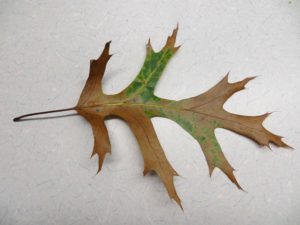
Oak leaf from the first oak wilt detection site in Sheboygan County, showing bronzing coloration characteristic of oak wilt infection. Photo: William McKnee, WI DNR
Oak wilt, a deadly fungal disease affecting the red oak group, was recently detected in Sheboygan County for the first time. Wood samples were collected from adjacent symptomatic oak trees on the Kettle Moraine State Forest – Northern Unit in the Town of Mitchell after the trees were spotted by DNR Forestry staff. The presence of Ceratocystis fagacearum, the fungus causing oak wilt, was confirmed through a DNA test done at the DNR Forest Health Lab and DNA sequencing done at the UW-Madison Biotechnology Center. On-the-ground control options are currently being examined.
Oak wilt is a common disease in the southern two-thirds of the state, but has been
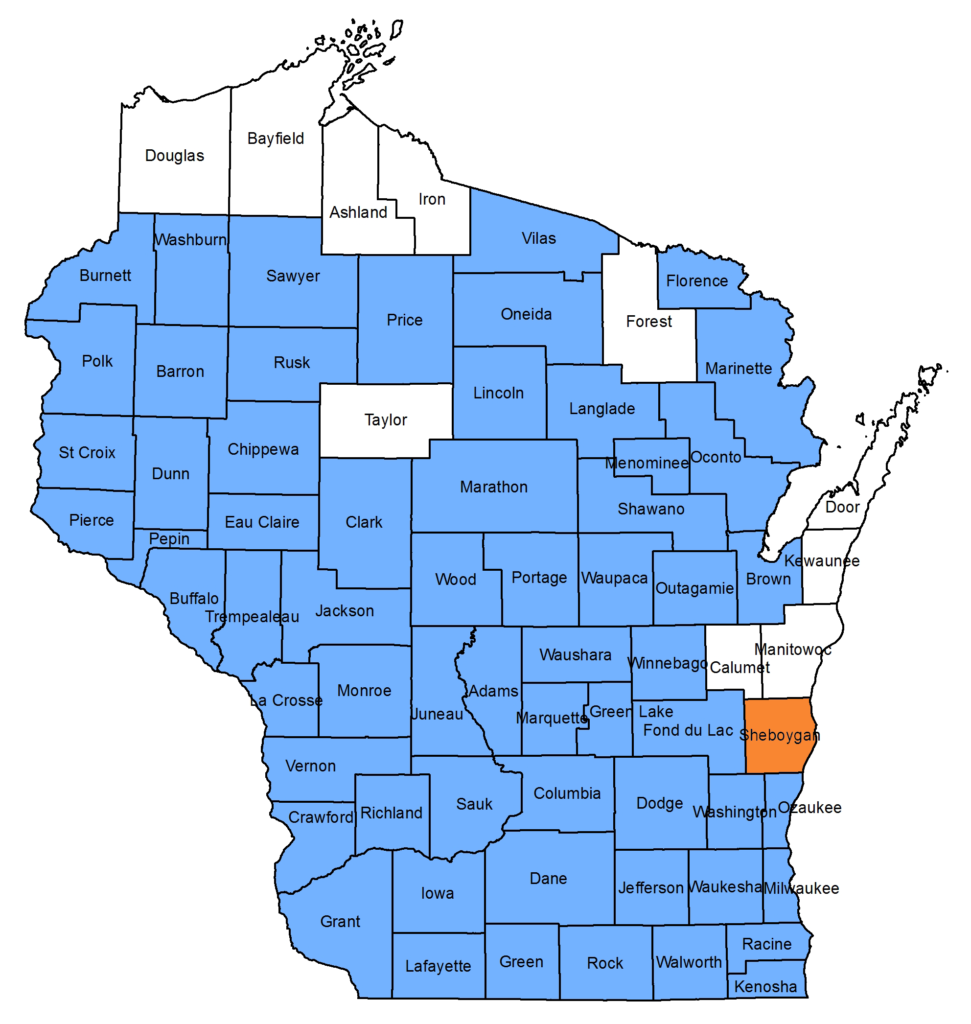
Map of counties where oak wilt has been detected, with the recent Sheboygan County confirmation shown in orange.
increasingly found in the northern counties. DNR staff have recently reported first community detections in these northern counties already known to have the disease:
- Langlade County – Town of Langlade
- Sawyer County – Town of Edgewater
- Washburn County – Town of Stone Lake
Oak wilt has been found in all Wisconsin counties except Ashland, Bayfield, Calumet, Door, Douglas, Forest, Iron, Kewaunee, Manitowoc and Taylor.
Additional information about oak wilt can be found at the DNR Forest Health website.
Written by Bill McNee, DNR Forest Health Specialist, Oshkosh. Bill.McNee@wisconsin.gov; 920-360-0942

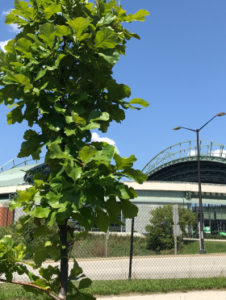
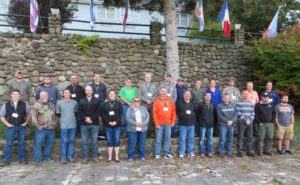 The first of three sessions was held for Wisconsin’s Community Tree Management Institute (CTMI). Twenty-six students from across the state met in Green Lake, WI October 17-18. These municipal tree managers (who lack technical and program management in arboriculture) learned the foundations of urban forestry. Through hands-on training and exercises, students learned about: canopy and measurement tools, tree benefits, awareness and support, politics and policy, leadership, partnerships, legal issues, ordinances, budgeting, tree boards and utilities. Instructors for session I included: municipal foresters, public works directors, a UW Extension agent, utility representatives, consultants and DNR staff. The variety of instructors, their perspectives and interactive components is meant to appeal to all learning styles.
The first of three sessions was held for Wisconsin’s Community Tree Management Institute (CTMI). Twenty-six students from across the state met in Green Lake, WI October 17-18. These municipal tree managers (who lack technical and program management in arboriculture) learned the foundations of urban forestry. Through hands-on training and exercises, students learned about: canopy and measurement tools, tree benefits, awareness and support, politics and policy, leadership, partnerships, legal issues, ordinances, budgeting, tree boards and utilities. Instructors for session I included: municipal foresters, public works directors, a UW Extension agent, utility representatives, consultants and DNR staff. The variety of instructors, their perspectives and interactive components is meant to appeal to all learning styles. 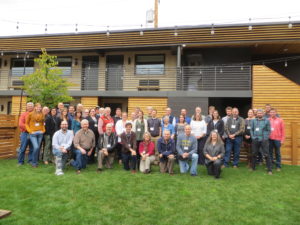 The Urban Forestry Council held their most recent quarterly meeting on October 13 at The Oxbow Hotel in Eau Claire. This was the second time the Wisconsin Council met with their colleagues in Minnesota, board members from the Minnesota Shade Tree Advisory Committee and MN DNR urban forestry staff. In addition, they were joined by Urban Forestry Council members from several additional states: Indiana, Iowa, and Michigan. The Wisconsin Urban Forestry Council and Wisconsin DNR were pleased to welcome these urban forestry representatives from the region for the meeting.
The Urban Forestry Council held their most recent quarterly meeting on October 13 at The Oxbow Hotel in Eau Claire. This was the second time the Wisconsin Council met with their colleagues in Minnesota, board members from the Minnesota Shade Tree Advisory Committee and MN DNR urban forestry staff. In addition, they were joined by Urban Forestry Council members from several additional states: Indiana, Iowa, and Michigan. The Wisconsin Urban Forestry Council and Wisconsin DNR were pleased to welcome these urban forestry representatives from the region for the meeting.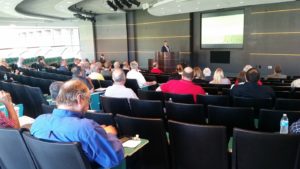 Approximately seventy people attended the event including architects, structural and civil engineers, forest products industry representatives, and researchers. Architects and engineers were targeted for this seminar due to their role in planning, designing, reviewing construction projects, and using of building materials (e.g. wood and mass timber products).
Approximately seventy people attended the event including architects, structural and civil engineers, forest products industry representatives, and researchers. Architects and engineers were targeted for this seminar due to their role in planning, designing, reviewing construction projects, and using of building materials (e.g. wood and mass timber products).